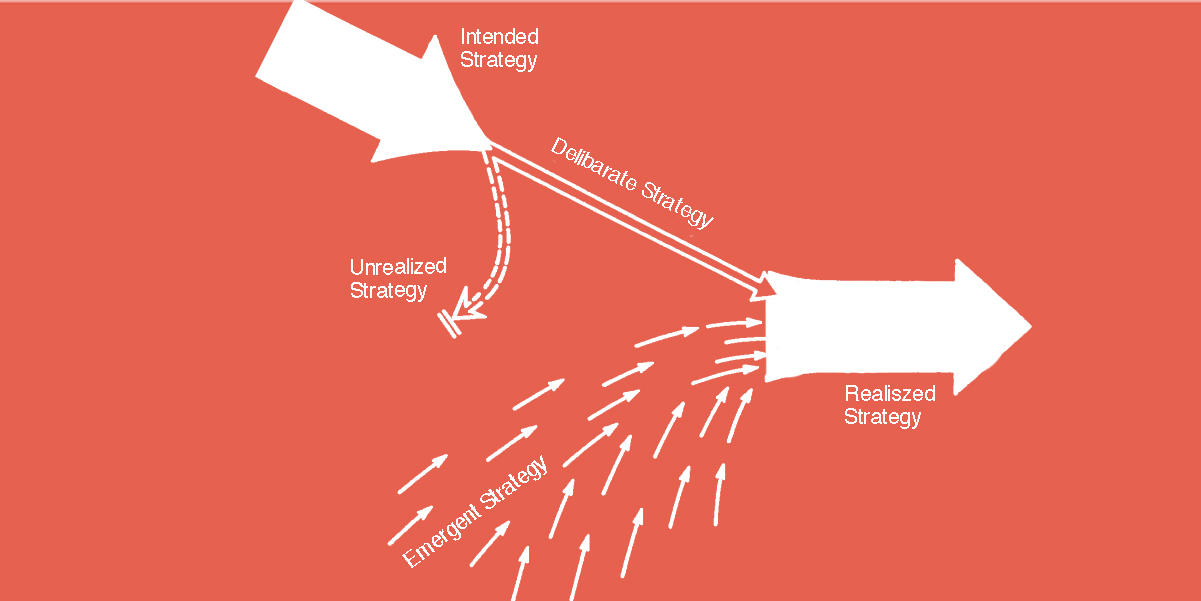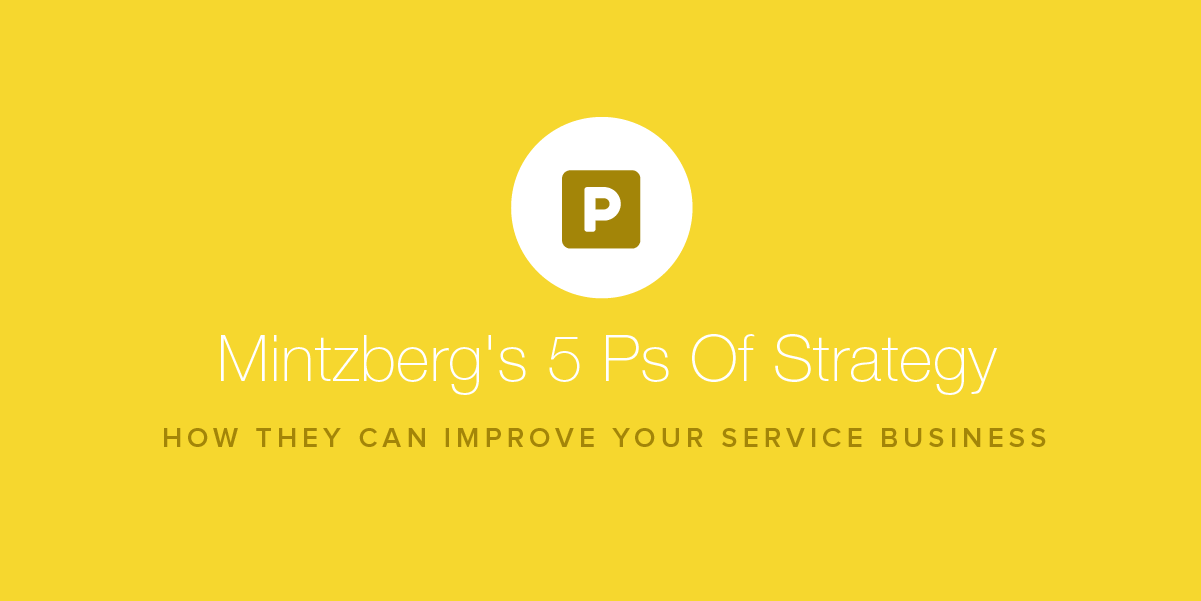Mintzberg’s 5 Ps of Strategy for Home Service Businesses
- May 13, 2019
- By: Vonigo

Many companies base their strategy on tactics first, not stopping to consider what their desired outcomes are. But if you want to truly succeed, there is much more to consider.
When creating the business strategy for a service-based company, you should keep an eye on what your competitors are doing, the specifics of your own organizational culture, the strengths of your colleagues and how your different teams interact.
According to Henry Mintzberg, а well-established academic and author on business and management, it can be extremely challenging to develop a successful strategy, especially in today’s market. His 5 Ps help us to make sure we look at strategy holistically.
Strategy for Home Services Businesses
Below, we’ll cover how both individuals and businesses in the home services industry can implement the 5 Ps of Strategy.
The 5 Ps of Strategy
The first time Mintzberg published the 5 Ps of Strategy was back in 1987. It remains relevant to this day and can still offer businesses a competitive edge. Each P stands for a different stage of the process of building a strategy:
- Plan
- Ploy
- Pattern
- Position
- Perspective
Once you understand the core of the 5 Ps of strategy concept, you’ll have a clearer picture of how to implement it for your service business.
We will guide you through each P and introduce a variety of helpful tools.
#1. Plan
Planning is the most obvious step and seems to happen instinctively. Each and every manager relies on it when developing a business strategy. The basic concept of this method is first brainstorming ideas and then planning how to take advantage of them.
It also helps to prioritize your tasks and plans, as the infographic below demonstrates.
Infographic: Time Management Principles for Service Business Owners
The following concepts are most helpful when designing your plan:
- SWOT Analysis – a method used for identifying the strengths, weaknesses, opportunities, and threats for your organization.
- PEST Analysis – a tool that helps outline a variety of macro-environmental factors such as political, economic, socio-cultural and technological.
- Brainstorming – a session for generating multiple ideas and selecting the best options.
Planning is essential for any business but it’s not enough to develop and implement a great strategy. If you want to take your approach to the next level, the rest of the Ps are vital.
#2. Ploy
According to Mintzberg, your strategy should implement scheming to discourage, divert and influence your competitors.
“A telecommunications company can purchase patents to prevent a competitor from potentially using them to introduce a new product on the market,” says Jordan Vellutini from Westline Electrician Services Ltd. “Or a big franchise chain can announce a plan for expansion in a certain area or market in order to discourage competitors from opening a (location) in the same place. Big companies have risen and fallen in service-based industries.”
Regardless of the type of services your company provides, there can be ways to discover key advantages over your competitors and exploit them.
Tools to help you with the Ploy method are:
- Impact Analysis – a method for collecting data and determining the effect of a potential disruption to your business.
- Futures Wheel – a way of structured brainstorming which creates a model about the future based on the analysis of the effect of events, trends, problems, etc.
- Scenario Analysis – a technique for determining future events by exploring various alternative outcomes.

#3. Pattern
The Plan and Ploy methods are great for developing a business strategy based on future events. But sometimes it’s good to look back to find inspiration from past experiences in your organization.
For example, if your company already provides outstanding customer support, you can base your decisions on further improving it. This way you don’t intentionally create a strategic advantage but the pattern you follow develops one.
Keep a sharp eye on your customer satisfaction metrics to adjust your actions. Monitoring patterns can make or break a company’s reputation for delivering outstanding services.
Find the Patterns in Your Business
In order to fully exploit this P, observe each and every unit and team in your company, and seek out emerging patterns. Afterward, think if you are making the most of each, especially when in the process of ongoing adjustment of your business strategy.
How can you enhance these patterns even further?
Can established and emerging patterns change the services you provide?
How can they guide your future planning?
Reveal the Potential of the Pattern Method:
- Core Competence Analysis – a concept which reveals the combination of skills and resources which characterizes the competitiveness of a company.
- USP Analysis – a method for identifying the USPs (Unique Selling Propositions) of an organization which makes it stand out on the market.
- VRIO Analysis – a technique for researching a company’s resources (rather than patterns) which you should take into consideration when creating the strategy.
This approach can lead to a tremendous impact on any service-based business.

#4. Position
The fourth P of Mintzberg’s business strategy explores the way your organization is positioned on the market. This method will aid you to realize the bond between your company and the specifics of the environment.
This concept can also guide you towards obtaining a cutting-edge advantage which is both unbeatable and sustainable. When you have your company’s positioning in mind, you will be able to see the big picture along with all external factors that influence your organization.
“You may choose to diversify your portfolio in order to stand out from the crowd of competitors and enter a less popular niche. “ says Jonathan Prichard, CEO of MattressInsider.com, “This is where a brand can rock it. According to Mintzberg, you can position your company according to conventional hierarchy, by formalizing an emergent strategy within a perspective, by taking advantage of a pattern which already opens new opportunities, or re-position within a firm set of options,” he adds.
Useful Reads:
Five Challenges of Growing a Service Business Across Multiple Locations
A 4-step Checklist for Expanding Your Business to a Second Location
What Home Services Businesses Need to Know About Marketing in 2019
Tools to Help You Position Your Company
- PEST Analysis – a method for outlining a range of external factors such as political, economic, socio-cultural and technological.
- Porter’s Diamond – a model that helps understand the competitive advantages of a company, group or nation due to available resources.
- Porter’s Five Forces – a tool for analyzing the five basic forces which are fundamental for every industry: competition, the potential of new entries, power of suppliers, power of customers, the threat of substitute products/services.
Bear in mind that the different Ps do sometimes overlap.
You can attain a certain position thanks to good planning or ploy. It is still worth thinking through each step individually to get a clearer picture of your path going forward.
#5. Perspective
As we mentioned above, organizational culture is very important when developing a strategy. The patterns of decision-making and thinking can have a huge impact on the company’s perspective.
A company which lets employees innovate and take risks can base its strategy on innovative products and services. On the other hand, if an organization relies heavily on management oversight and data processing, it can form a strategy aimed at outsourcing these type of services to other businesses. For example, does a franchise model make sense? Or is it advantageous to subcontract local service providers to service a larger area?
The tools which will help you develop a strategy as perspective are the following:
- Congruence Model – a tool for establishing the reasons behind any performance problems and determining how to fix them.
- Cultural Web – an analysis of the organization’s paradigm based on 6 elements: stories, symbols, power structures, organizational structures, control systems, rituals, and routines.
- Deal and Kennedy’s Cultural Model – a model which differentiates 4 types of organizations based on two factors: how are feedback and rewards received within the company; how willing is the organization to take risks.
How to Use the 5 Ps of Strategy
When using Mintzberg’s 5 Ps don’t think of them as separate processes but rather as different points of view. Each will help you develop or improve your current business strategy.
The 5 Ps will be extremely helpful during these steps of the strategy development process:
- Ensure that you have analyzed all relevant aspects when collecting information.
- Test if your ideas are rational and pragmatic.
- Eliminate any deviations from your final strategy.
“One way is to position yourself as the full-proof budget-friendly alternative,” shares James Allan Director of the Fife Stonemasons Company. “If you can disrupt demand at both accessibility and price, persistence is all it takes to succeed.”
If you use the 5 Ps in the stages mentioned above, you will be able to outline crucial problems and opportunities at the beginning of the strategy development.
You’ll be better informed and equipped to plot a course to a brighter future for your business.
Want to learn about how service business management software can help to manage and grow your business? Book a free, private demo of Vonigo.



